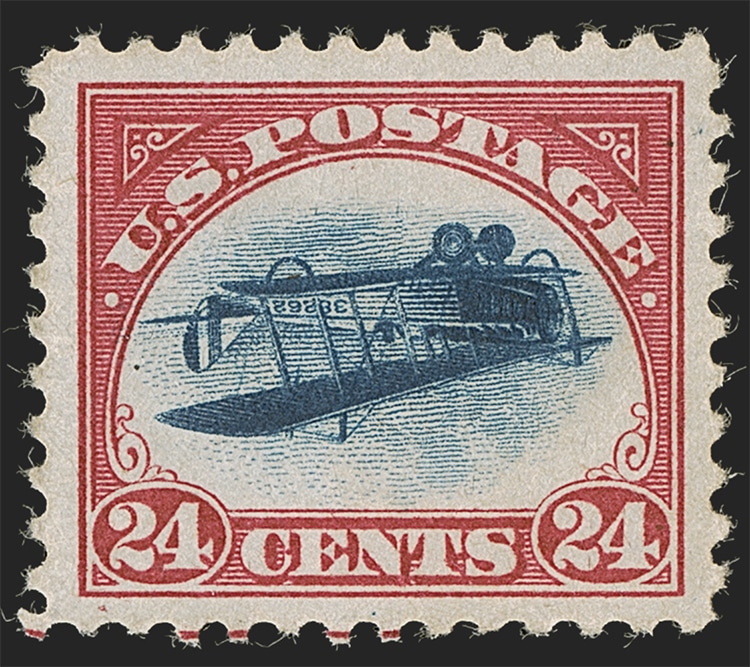The Inverted Jenny stamp, 1918.
The hobby has existed since the 19th century whenadhesive stampsbegan to be created, sold, and used.
The Inverted Jenny was printed in 1918 to memorialize the beginning of regular air mail.

The Inverted Jenny stamp, 1918. (Photo:Siegel Auction Galleries)
However, the Bureau of Engraving and Printing messed up the printing of the 24-cent stamp.
The image is flipped.
Most of the misprints were destroyed, but one sheet was sold for $24 to a collector.

“Le Philatéliste” or “The Philatelist,” by François Barraud, 1929. (Photo:Wikimedia Commons, Public domain)
Since then, it has achieved legendary status among stamp collectors.
A group of four sold for $4.86 million with fees atSotheby’sin 2021.
In 2018, a single in excellent conditionsoldfor $1.35 million.
This most recent example was examined by two stamp grading authorities, dubbed Mint Never-Hinged.
This is the pinnacle of stamp conditions.
On November 8, 2023, it went to auction at Robert A. Siegel Auction Galleries.
This is a historic moment for the hobby, president Scott Trepel toldARTnews.
The Inverted Jenny we sold today is the best example of the 100 stamps from the sheet.
We have tracked each of the stamps and are certain no other example compares to this one.
It has even beenforged.
Ironically, they made some right-side-up too, just to add to the collecting fun for everyone.
Le Philateliste or The Philatelist, by Francois Barraud, 1929.